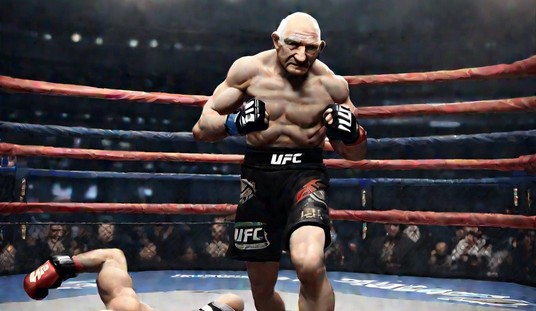See Part 1 in Kathy Shaidle’s series exploring punk rock here: How the Sex Pistols Made History by Lying About It
Let’s get this out of the way:
Randal Doane is an assistant dean at Oberlin.
Politics aside (and he doesn’t shove it up your nose), this means you’ll trip over academic, culture-critic jargon — “codes” and “gestures” abound; “Eros” crashes the party — while otherwise enjoying his new book, Stealing All Transmissions: A Secret History of The Clash.
And there’s a lot to enjoy.
Stealing distills one fan’s decades of wide reading, deep listening, and just plain thinking into a multi-faceted gem.
In the hands of a less skillful writer, this book would feel like an out-of-your-league sexual pass, an awkward attempt to squeeze too many topics — the evolution of punk music (along with the etymology of the word); the rise and fall of AM and FM radio; the underground scenes in New York and California, to name but three — between only two (virtual) covers.
Somehow, though, Stealing works, distinguishing itself from similar titles by piling on plenty of original insights; for one thing (a bit like the recent How the Beatles Destroyed Rock ‘n’ Roll), this book explores how the medium changes the message — that is, how the technology we employ to consume music alters music itself, along with the culture at large.
(To cite a particularly cliched example: The LP made it easier to have sex to music, as one didn’t have to leap up to change the record, or worry that a radio DJ might ruin the mood with the wrong selection. How many children were conceived as Frank Sinatra’s Songs for Swingin’ Lovers spun away on the other side of the room– besides me, that is — I couldn’t begin to guess.)
Doane also demonstrates, in pointillistic detail, how a tiny band of now-forgotten local DJs championed (today we’d say “curated”) punk, and “broke” The Clash and other English bands in America.
In doing so, he reveals what we lost when that free-form radio format was killed off.
(P.S. — A note about audio that follows throughout: These interviews with Joe Strummer were recently uploaded to YouTube by HazyRock.com. While the date is unknown, they seem to correspond roughly to the “early days” period Doane focuses on in his book.)
https://www.youtube.com/watch?v=Gyc8oIUktEw
But first, Doane hands over the reigns to The Clash’s long time (that is, seven-year) self-described “backline roadie, loyal foot soldier and eminence grise,” Barry Auguste.
“The Baker,” as he’s better known, is also a natural writer (who doesn’t update his blog often enough).
In that spirit, his foreword to Stealing All Transmissions is too short, but most of the band’s fans would say that even if it clocked in at 50,000 words.
(Perhaps he’ll follow in road manager Johnny Green’s footsteps and put out a memoir some day…)
Here, August writes:
This story, the one in your hands, comes as a delightful surprise (…) After reading this tale, I stand corrected: I thought only I knew where the bodies were buried.
Stealing All Transmissions is the first history of The Clash by an American, and it lovingly documents — as Doane notes — how “The Clash fell in love with America, and how American loved them back.” It’s unlike anything else you’ve ever read about The Clash (…) it situates [the story] amid larger cultural and economic forces in the U.S. (…)
It was only upon reading Stealing that I realized that nothing happens in a vacuum: many people were tilling the soil to make America a fertile environment for the arrival of “the only English band that mattered.”
https://www.youtube.com/watch?v=crSUIvRJHDk
Silk-screened, parodied and even, in 2009, stuck on an official UK postage stamp (above), Pennie Smith’s photo of Paul Simonon smashing his bass at New York’s Palladium on September 21, 1978, is one of those few pop culture artifacts entitled to wear that over-used adjective “iconic.”
In Stealing All Transmissions, however, Doane questions the standard-issue story behind the image.
Before it graced the cover of The Clash’s late-1979 double album London Calling, the photograph had been one of many Smith compiled in her instant-classic book, The Clash: Before and After.
All four band members contributed (often hilarious) captions, and were asked to situate the images in time and space as best they could, since Smith categorized her contact sheets “by tour and year only.”
Joe Strummer confidently dated the Simonon photo September 21, the band’s second of two nights at the Palladium.
Now, few of us are wholly reliable narrators of our own lives, but Strummer in particular couldn’t always be taken at face value.
Like all created entities, The Clash were prone to deliberate or accidental confusion when it came to manufacturing their mythology.
The trouble, Doane writes, is that the September 21 concert was broadcast live by one of those supportive local radio stations mentioned above, WNEW.
And surviving recordings of the DJs’ before-and-after concert banter don’t indicate that anything particularly unusual took place.
Furthermore, Simonon had little to be annoyed about that second night.
The first show, however, was another matter.
https://www.youtube.com/watch?v=bZEaohgqgSs
On this night, The Clash were aware that they stood at the crossroads of rock history. The band had just laid down the final tracks for London Calling, a double album they had put together largely on their own. Brimming with confidence, The Clash drew on their advance to finance this tour, despite the fact that Give ‘Em Enough Rope, their second album, had failed to crack the U.S. Billboard Top 100.
The Clash were nearly $100,000 in arrears and in a week would run out of money.
Also that night, they were frustrated — not for the first or last time — by a venue’s rigid staging seating: always top-of-mind concerns for the fan-centric band.
In subsequent interviews, Simonon highlighted the problem of separating the real fans from the stage by an orchestra pit full of press, and affirmed the band’s commitment to having fans up against the stage. During a two-night residency, such problems could be fixed.
Indeed, on night two at the Palladium, thanks to some strong-arming and work-arounds by The Baker and Green, fans were back in their rightful place, front and center.
Other issues had been resolved, too, including the matter of overzealous bouncers.
It seems, though, that one bouncer’s behavior on Night #1 was the imputus for Simonon to go, as Doane puts it, “momentarily mental.”
…as you can see from the cover of this book, a squat bouncer crosses downstage right to upstage right, in pursuit of an unruly female fan. [Guitarist Mick] Jones, alertly, stepped in and whisked her off to safety.
That instance of managerial man-handling was what finally shoved an already frustrated Simonon over the edge.
Somebody owes this unknown bouncer a belated thank-you note.
When The Clash chose Smith’s photo for their next album cover, she objected at first.
For one thing, it’s out of focus.
(Fearing Simonon’s wrath that night, she’d held out her camera toward him and blindly snapped while she was backing out of his way.)
Other objections could have been raised at the time:
For one thing, if you’re going to put your group’s best looking member on an album cover, why choose a photograph in which he is not only unrecognizable, but has seemingly devolved into some kind of lumpy, deformed potato-primate hybrid?
With that broken instrument and all, is The Clash telling us to stop making music, after telling us to start, two records ago?
Are they telling us they’re quitting?
Luckily, no such second-guessing took place, or if it did, it obviously didn’t matter in the end.
Anyway, there’s much more to Stealing All Transmissions than this geek-level detective work.
Doane is particularly good at comparing yesterday’s media landscape (and fan-scape) to today’s — and the future’s, in which books like his probably won’t exist:
[F]ew bands coming of age in the past ten years have been subject to the lengthy profiles and features that characterized the rock press in the 1970s, ’80s, and early ’90s. (…) (In our youth, we poured over the album reviews, looking for just the right combination of adjectives and analogies — “low fi,” “the Velvets” — as we prepared for our next trip to Tower Records.) (…)
In turn, it is difficult to imagine, in the near future, a writer devoting the time to compile a five-hundred-and-twenty-four-page biography on a contemporary band or artist (see Marcus Gray’s The Clash: Return of the Last Gang in Town), for neither the raw materials nor the audience for such a project will exist. With digital screens and digital audio players, we read differently — and we listen differently.)












Join the conversation as a VIP Member